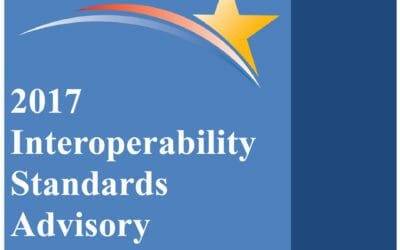In the last year, the ONC has iteratively edited the ISA based on feedback. The evolution of the format greatly improves its usefulness and navigation, especially the web-based layout and in-context comments. The added clarity on standards for observations and observation values is also a very important and welcome improvement. Across many interoperability needs, the ISA pairing of LOINC and SNOMED CT is an appropriate and helpful distinction.
As the ISA continues to evolve, here are some key ways it can continue to improve.
Expanded Scope
Since publication of the original 2017 edition, the ISA has expanded considerably in scope. It now includes a new section for Administrative Standards and interoperability needs around research and public health.
The spectrum from public health to clinical care (including its administrative component) to clinical research is much more a continuum than discrete domains. I strongly support building towards a common, shared infrastructure across this spectrum and thus having them together in the ISA makes sense. However, the current set of interoperability needs across these domains are not very clearly defined and appear more to be generic labels for existing standards rather than actual use cases. Similarly, it is unclear why Administrative standards needs a separate section, when those standards also have the components of vocabularies and structures (and, perhaps later, models).
New interoperability needs for laboratory data needed
I strongly agree with the IVD Industry Connectivity Consortium (IICC)’s recommendations to add two new interoperability needs. The IICC has collaboratively developed standards solutions to two important challenges for laboratory data interoperability. Their goal is enable plug & play connectivity of IVD instruments to middleware and Laboratory Information Systems (LIS).
Identify linkages between vendor IVD test results and standard code
Standard: LIVD – Digital Format for Publication of LOINC to Vendor IVD Test Results
First published in June 2017, LIVD is a specification that defines the digital publication of the specific LOINC codes appropriate for vendor-defined IVD tests. LIVD assures that laboratory personnel select the appropriate LOINC codes for the IVD tests used by their laboratory. It also allows LIS systems to automatically map the correct IVD vendor test result to a LOINC code. With this standard, IVD vendors can massively improve laboratory data interoperabilty.
Connectivity between instruments, middleware, and LIS systems
Standard: LAW – Laboratory Analytical Workflow Profile
The LAW Profile defines the physical connection, message definitions (based on HL7 v2.5.1), and workflow definitions between instruments, middleware, and LIS systems in the laboratory. LAW is already implemented by all major IVD companies and lowers the activation energy of getting standardized data from the lab to downstream clinical systems.
New domains with vocabulary standards ready for inclusion
As I have previously noted, there are three high-value, well-established domains where the ISA can recommend additional vocabulary standards. There are large scale implementations around the world who have implemented the vocabularies in this way. And this usage has been recommended previously in the U.S. in many contexts, including the CHI initiatives, HITSC, and others. These domains should be added to the ISA Section I: Vocabulary/Code Set/Terminology Standards and Implementation Specifications:
Clinical measurements and observations
Interoperability need: send, receive, and use clinical measurements and observations
Standard for observations: LOINC
Standard for observation values: SNOMED CT
Clinical document types
Interoperability need: send, receive, and use clinical documents
Standard: LOINC
Implementation Guide: HL7 Implementation Guide: LOINC Document Ontology, Release 1
Patient reported outcome measures, survey instruments, and other standardized patient assessments
Interoperability need: send, receive, and use patient reported outcomes measures, survey instruments and patient assessments
Standard: LOINC
LOINC has a robust model and rich set of content (more than 10,000 variables!) for these kinds of observations. There is growing recognition that these kinds of measures are crucial for understanding a patient’s health, especially in areas such as functional status and the social and behavioral determinants of health.
Confusing listing of standards related to research
The ISA continues to list a confusing set of standards for clinical research. This was an area that the 2017 Task Force discussed and made some recommendations about, and noted that it needed more work. Clearly there are CDISC standards appropriate for submitting regulated research data to the FDA, but the spectrum from clinical care to clinical research is really a continuum. Many of the standards used for representing and exchanging clinical data are appropriate and useful in the research context as well.
One of the more poorly crafted interoperability needs in the ISA is this one:
Representing Analytic Data for Research Purposes
What is “analytic data” and which kinds of “research purposes” is this meant to cover? More importantly though is why/how is this need is different from all of the other kinds of content listed elsewhere in the ISA (e.g. lab tests, medications, diagnoses, etc).
Certainly all of the large scale observational research networks (OMOP, Mini Sentinel, OHDSI, PCORnet) have developed common data models that employ many of the same vocabularies (LOINC, SNOMED, ICD) listed elsewhere in the ISA. The listing of only CDISC vocabulary standards here is peculiar and inadequate.
Wrap-up
I’m thankful that ONC continues to improve the ISA and seek public comment. The publication format makes it easier to review and provide feedback “in-line” with the context. I look forward to the continued discussion and improvements to the ISA in the year ahead.


